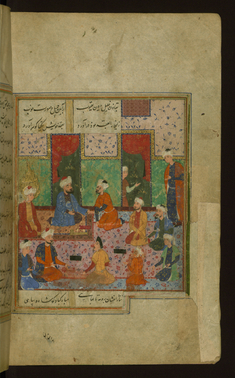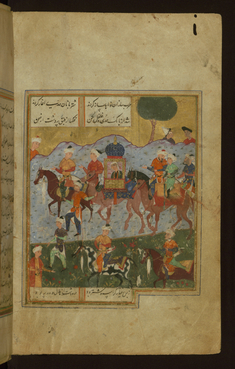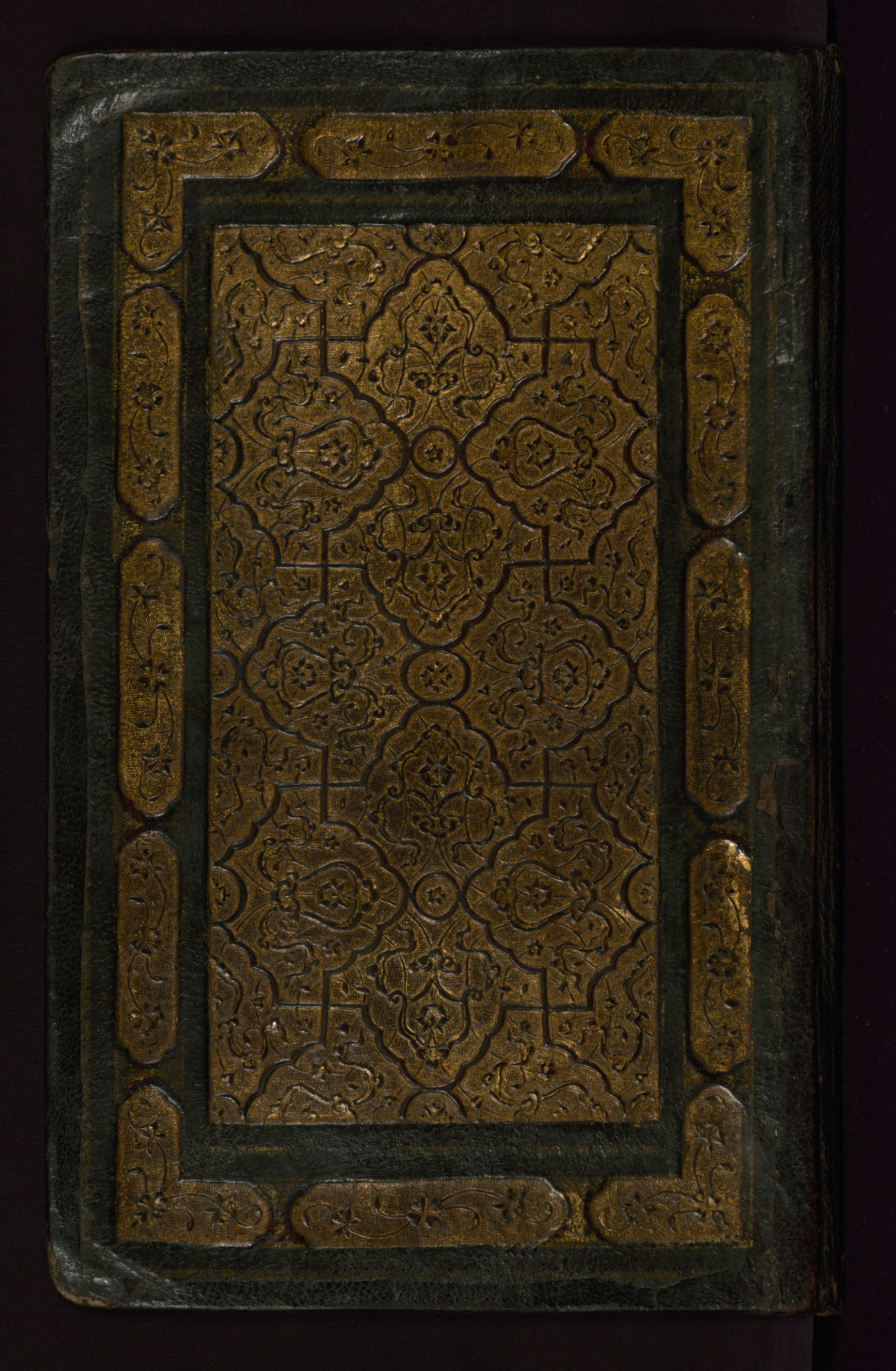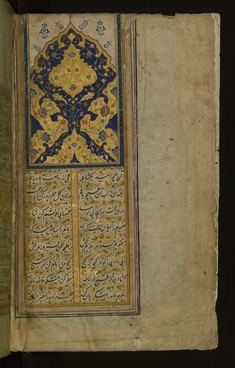Yusuf and Zulaykha
(Islamic World , Manuscripts and Rare Books, Islamic Manuscripts)
Walters manuscript W.644 is an illuminated and illustrated copy of the famous story of Joseph and Potiphar's wife (Yusuf va Zulaykha) by Nur al-Din Jami (died 898 AH/AH 1492), executed in the 10th century AH/AD 16th in Safavid Iran. The text is written in black Nasta"liq script and begins with an illuminated incipit with headpiece (fols. 1b-2a). The manuscript contains three illustrations (fols. 50b, 116a, and 150b). The dark brown goatskin binding, which is original to the manuscript, has panel-stamped designs and red doublures with gold filigree work over colored paper.
Provenance
Provenance (from the French provenir, 'to come from/forth') is the chronology of the ownership, custody, or location of a historical object. Learn more about provenance at the Walters.
Papas-zadah …(?), [1]311 AH/AD 1893-1894 [fol. 1a]; Henry Walters, Baltimore [date and mode of acquisition unknown]; Walters Art Museum, 1931, by bequest.
Exhibitions
| 1996 | To Arrest the Ravages of Time: Caring for Art at the Walters. The Walters Art Gallery, Baltimore. |
| 1984-1985 | Illuminated Manuscripts: Masterpieces in Miniature. The Walters Art Gallery, Baltimore. |
Geographies
Iran (Place of Origin)
Measurements
Folio H: 8 11/16 x W: 5 1/2 in. (22 x 14 cm)
Credit Line
Acquired by Henry Walters
Location in Museum
Not on view
Accession Number
In libraries, galleries, museums, and archives, an accession number is a unique identifier assigned to each object in the collection.
In libraries, galleries, museums, and archives, an accession number is a unique identifier assigned to each object in the collection.
W.644
Do you have additional information?
Related Objects

Yusuf Gives a Royal Banquet in Honor of his Marriage






